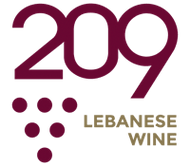209 Hot Stories
Exploring the Divine Bouquet: Unveiling Latourba's Winery and Their Exquisite Wines
Latourba's Winery, nestled among the scenic scenery of the famous wine region, is a tribute to the everlasting art of winemaking. With a history dating back over a century, Latourba's...
Your wine preference based on your coffee of choice!
Choosing a wine can be a quite difficult task for many of us; we don’t know what to look for exactly or which characteristics or features would be to our...
Heading to your first wine-tasting? Here’s how to make the most of it
Wine-tasting events can be very enjoyable, especially if they’re experienced with good company. To make the most of a wine-tasting event, there are a number of things to be mindful...
Notes and Impressions from a VINIFEST 2017 visitor
Interesting show. Several good surprises, some of which can even be called amazing. Overall Lebanese wine quality still on an upward trend. Lebanese Wine discovery: Chateau Marsyas red 2012: Amazing....
Where do wine aromas come from?
Wine drinking is a multidimensional experience, and is savored by all our senses. The ability to identify the subtlest of flavors and aromas takes a bit of practice but only...
A Note from The President of UVL
The Lebanese winemaking industry has been relatively active in the recent past, with a current count exceeding 40 wineries compared to just 5 in the early 1990s, and a...
How to Impress Your Date by Tasting Wine Like a Pro
So you’ve gone the extra mile to invite her to the hottest new restaurant with an unbelievably tempting menu. You confidently order your three-course meal and the sommelier hands you...
The Quick Wine Poll: 6 Questions On Wine You Want Answered
We asked you to tell us what wine-related question you needed an answer to right now. Here are the top 6 questions. Keep them coming! What does ‘terroir’ even mean?...
How About Trying Something New?
Like coffee, developing a more nuanced palate for wine can take time. But that shouldn’t put you off straying away from the tried and tested route. After all, your next...
How to Pick the Perfect Wine Glass
Enjoying a good glass of wine is primarily about the sensory experience – being able to appreciate the feel, the aroma and the color all go a long way. Having the right glassware plays a big part in enhancing your enjoyment of a wine.
The Art of Decanting
Decanting a wine – or the act of pouring a wine into a separate vessel before serving it – is a process that often raises a lot of questions. Which wines need to be decanted? How long before serving should you decant? Does decanting actually improve the taste of a wine or is it just a pompous, old-fashioned tradition?












